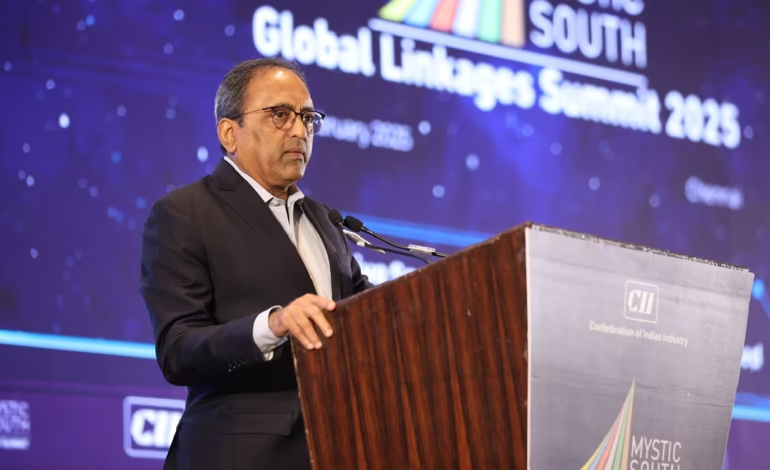Larsen & Toubro (L&T) Chairman and Managing Director, SN Subrahmanyan, has sparked discussions with his recent remarks on the reluctance of Indian workers to relocate for jobs. Speaking at the CII South Global Linkages summit, he emphasized the growing challenges in the construction and engineering industries due to labor shortages. He pointed out that while other countries grapple with migration issues, India faces a unique problem: a workforce that prefers stability over mobility.
Labour Shortages in the Construction Sector
The construction industry, a key driver of India’s economic growth, is witnessing significant workforce shortages. Subrahmanyan revealed that L&T employs around four lakh laborers, but due to high attrition rates, the company needs to mobilize nearly 60 lakh workers annually. Traditionally, recruitment in the sector relied on word-of-mouth and recruitment agencies. However, with the changing dynamics, companies are now leveraging digital communication to reach out to skilled workers.
Despite these efforts, persuading workers to take up new assignments remains a challenge. The reluctance to migrate for work is driven by various socio-economic factors, including government welfare schemes, financial assistance programs, and an overall improvement in living conditions. Subrahmanyan cited initiatives such as Jan Dhan bank accounts, direct benefit transfers, the Garib Kalyan Yojana, and MGNREGA as key contributors to workers’ financial stability, reducing their dependence on job migration.
Adapting to Workforce Trends: L&T’s HR for Labour
In response to these workforce issues, L&T has introduced a specialized department called “HR for Labour” to address the evolving labor market demands. This dedicated team focuses on workforce mobilization, ensuring that skilled workers are available when needed. Subrahmanyan stressed that the company is investing in better strategies to attract and retain laborers while understanding their reluctance to relocate.
The transformation in workforce behavior has led to a fundamental shift in HR practices. Digital tools, social media, and targeted outreach campaigns are being used to maintain engagement with workers, ensuring they are promptly informed about new job opportunities. However, despite these efforts, Subrahmanyan acknowledged the continued difficulty in persuading workers to move to new locations for employment.
Tech Professionals and Remote Work Preferences
The reluctance to relocate is not limited to blue-collar workers. The IT and engineering sectors are also experiencing similar trends. Subrahmanyan highlighted a stark contrast between past and present workforce attitudes, stating, “When I joined L&T in 1983, my boss told me to move from Chennai to Delhi for work. Today, if I ask an engineer from Chennai to move to Delhi, he simply says ‘bye.'”
This shift is particularly noticeable in the tech industry, where employees increasingly prefer remote work options over traditional office setups. The COVID-19 pandemic accelerated this trend, reinforcing the advantages of work-from-home arrangements. Many professionals now prioritize work-life balance, reduced commuting stress, and geographic flexibility over job relocation.
Companies across industries are being forced to rethink their employee engagement and retention strategies. Hybrid work models and flexible job structures have become critical to attracting and retaining talent in today’s evolving workforce landscape.
Industry-Wide Implications
The shift in workforce behavior has far-reaching implications for India’s economic and industrial sectors. The construction and engineering industries, in particular, depend heavily on a mobile workforce to complete large-scale projects on time. However, with labor shortages persisting, project timelines and operational costs could be significantly affected.
For businesses, this means adopting new HR strategies to cater to the changing workforce mindset. Companies may need to invest in better incentives, competitive wages, and training programs to attract workers. Additionally, organizations must focus on improving work environments, offering flexible work arrangements, and embracing digital transformation to stay competitive in the job market.
Government policies also play a crucial role in shaping labor mobility. While welfare schemes provide much-needed financial support, policymakers must strike a balance to ensure that economic development is not hindered by workforce shortages. Encouraging skill development, job incentives, and infrastructure support could help bridge the gap between labor supply and demand.
Source: businesstoday.in









